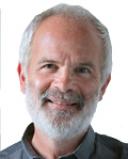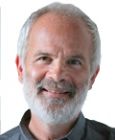Child Development
How Many Are We?
On the difficulty of counting people who are bilingual
Posted September 19, 2012
Post written by François Grosjean. Updated on April 4, 2020.
It has been estimated that probably more than half of the world's population is bilingual; that is, it uses two or more languages (or dialects) in everyday life (see here). But this is just an estimation, and unfortunately, we are still a long way away from knowing exactly how many people are indeed bilingual. Why is that?
It is rare that a national census or survey has a question pertaining to bilingualism itself. Usually, there are questions on the languages known by the inhabitants of the country and the results obtained are then used by researchers to work out the number of bilinguals. This can be rendered difficult when the questions asked are not quite appropriate or when they reflect a certain partiality concerning what it means to know a language or to be bilingual.
I will present two examples of national censuses—the one in the United States and the one in Switzerland—and show how quite official data can sometimes produce very surprising results. In this instance, it would appear that there are proportionally more bilinguals in the United States than in Switzerland, even though the latter country is known the world over for the bi- or multilingualism of its inhabitants.
In the United States, language questions have been asked on and off in the censuses or in surveys conducted by the U.S. Census Bureau for more than a hundred years. These questions have been quite straightforward, and estimating the number of bilinguals from the data has not been too difficult, although the results are invariably tentative. In 1940, for example, the question was addressed with, "Language spoken in home in earliest childhood," and in 1960, for a person born outside the U.S., the question was, "What language was spoken in his home before he came to the United States?" Since 1980, three questions have been asked: "Does this person speak a language other than English at home? What is this language? How well does this person speak English (very well, well, not well, not at all)?"
The 2018 American Community Survey (ACS), using these questions, found that a bit more than 67 million inhabitants spoke a language other than English at home. Among those people, some 63 million also knew and used English, and hence were bilingual. This represents 20.55 percent of the population. It should be noted that children under five were not counted nor were people who use a second or a third language in their everyday lives but only English at home. We can only guess how many of those there are, but a rough estimate of the final proportion of bilinguals is probably around 23 percent of the population.
Let's now turn to Switzerland and the language questions asked in its 2010 national census. I will concentrate on the first one, as it is so very different from the questions that have been asked in the U.S. In addition, it is the data obtained with this question that have been used by Swiss Statistics to estimate the number of bi- or multilinguals in the country. Here is a translation of the question: "What is your main language, i.e. the language in which you think and that you know the best? If you think in several languages and know them very well, then name these languages." This was followed by a number of language categories which often grouped together a national language and a dialect such as "German or Swiss German."
Clearly, the people who thought of the question had a very restrictive view of bilingualism (note that the most used definition of bilingualism today is simply that it is the regular use of two or more language or dialects in everyday life). In the census question, it was assumed that people have one main language and that if they have others, then they must know them very well. In addition, it was stipulated that one must think in each of one's languages to be able to list them. The fact that thinking can take place independently of language and can be visual-spatial or involve nonlinguistic concepts was not taken into account (see here).
Finally, speakers of Swiss German and German, among others, were given just one category to check and hence could not list their two languages. And yet, the majority of the Swiss German population (close to two-thirds of Swiss people) use both Swiss German and German in their everyday lives.
The outcome was that Swiss Statistics stated that a mere 15.8 percent of the Swiss population is bi- or multilingual (less than the 23 percent found for the U.S.) when, in fact, most Swiss people know several languages that they use frequently.
Faced with such issues as what a language is as opposed to a dialect, what knowing a language means, how to define bilingualism, etc., it is not surprising that the results of language surveys do not give us a ready answer as to who is monolingual, bilingual, or multilingual. Where does that leave researchers in the field? They have no choice but to continue stating that probably more than half of the world's population uses two or more languages (or dialects) in everyday life–some even go up to 65% (see here)–in the hope that they can have a definite figure one day.
"Life as a bilingual" posts by content area.
François Grosjean's website.
References
Grosjean, Francois. The extent of bilingualism. In Grosjean, F. (2010). Bilingual: Life and Reality. Cambridge, MA: Harvard University Press.
Zeigler, Karen, and Camarota, Steven A. (2019). 67.3 Million in the United States Spoke a Foreign Language at Home in 2018. Center for Immigration Studies, Washington, DC.




